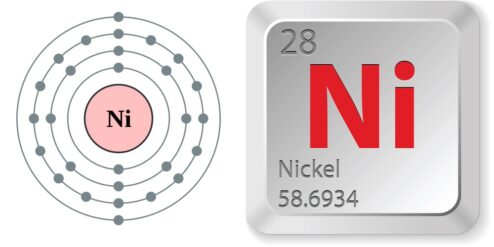Nickel is a trace mineral that naturally occurs in the environment. It is found in many foods, but the amount varies depending on the soil and water where the food is grown. While nickel is essential for the body in very small amounts, excessive intake can cause health problems. This article will focus on the nickel content in bananas, the impact of high nickel foods on health, and how to manage nickel intake in your diet.
Understanding the Nickel Content in Foods
Nickel is present in varying amounts in nearly all foods. It is absorbed by plants from the soil and can also enter our food supply through pollution or during food processing. The nickel content in foods can vary greatly depending on the nickel content of the soil in which the food was grown.
For instance, foods grown in areas with high levels of nickel in the soil will have higher nickel content. Also, certain cooking methods can increase the nickel content of food. Using stainless steel cookware, for instance, can increase the nickel content of the food being cooked.
It’s also important to note that nickel can accumulate in the body over time. This means that even if you consume foods with low nickel content, you could still end up with high levels of nickel in your body if you consume these foods frequently.
Are Bananas High in Nickel? A Comprehensive Analysis
Bananas are not considered a high-nickel food. They contain approximately 0.16 mcg of nickel per 100 grams, which is relatively low compared to other foods. However, the nickel content can vary depending on the soil and water where the bananas are grown.
Despite their low nickel content, bananas are often consumed in large quantities, which could contribute to an overall higher intake of nickel. Moreover, bananas are often consumed with other foods that may have higher nickel content, which could further increase your overall nickel intake.
The Impact of High Nickel Foods on Health
Excessive intake of nickel can lead to nickel allergy, a condition characterized by skin rashes and inflammation. It can also cause systemic nickel allergy syndrome (SNAS), a more severe condition that can cause chronic fatigue, headaches, and digestive problems.
Moreover, high levels of nickel have been linked to certain cancers, heart disease, and neurological problems. It’s also worth noting that certain individuals are more susceptible to the effects of nickel due to genetic factors or existing health conditions.
How to Manage Nickel Intake in Your Diet
The best way to manage nickel intake is to be aware of the foods that are high in nickel and to limit your consumption of these foods. This includes foods like whole grains, beans, nuts, and certain types of fish and shellfish.
Additionally, you can reduce your nickel intake by avoiding cooking with stainless steel cookware, as this can increase the nickel content of your food. Instead, opt for glass, ceramic, or iron cookware.
Expert Advice: Safe Nickel Consumption Levels
The World Health Organization (WHO) suggests a safe upper limit of 0.6 mg of nickel per day for adults. However, individuals with nickel allergy or SNAS may need to limit their intake to even lower levels.
It’s important to note that nickel is just one of many minerals that our bodies need to function properly. Therefore, it’s important to maintain a balanced diet that provides all the necessary nutrients.
Other High Nickel Foods to Be Aware Of
Other foods that are high in nickel include whole grains, beans, nuts, and certain types of fish and shellfish. Chocolate and tea also contain relatively high amounts of nickel.
While bananas are not high in nickel, they are often consumed in large quantities and with other high-nickel foods, which could contribute to an overall higher intake of nickel. Therefore, it’s important to be aware of the nickel content in the foods you eat and to manage your intake accordingly.
Per approfondire:
- World Health Organization: Nickel in Drinking-water: Provides detailed information on the health effects of nickel and safe consumption levels.
- USDA National Nutrient Database: A comprehensive source of nutrient information, including nickel content in various foods.
- American Contact Dermatitis Society: Nickel Allergy: Provides information on nickel allergy and tips for managing it.
- National Institute of Environmental Health Sciences: Nickel: Offers detailed information on the health effects of nickel.
- Cleveland Clinic: Nickel Allergy: Provides information on nickel allergy, including symptoms and treatment options.


